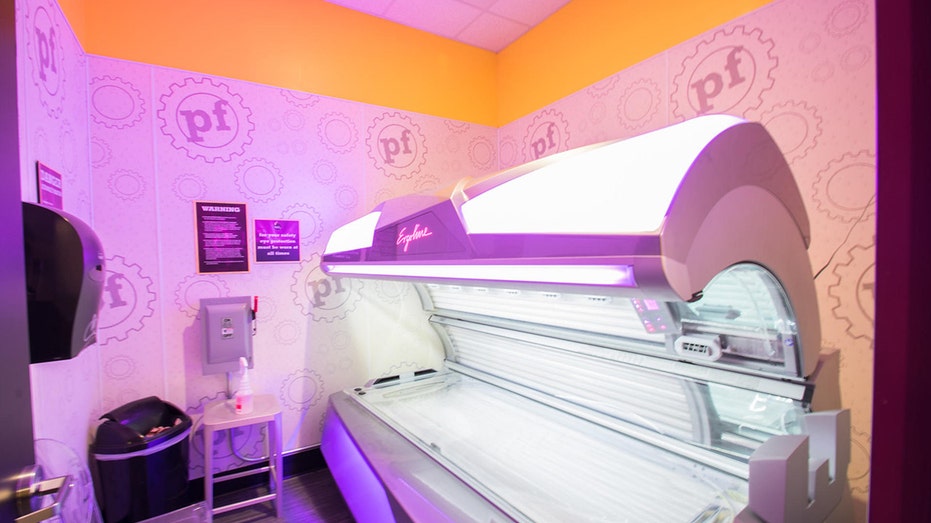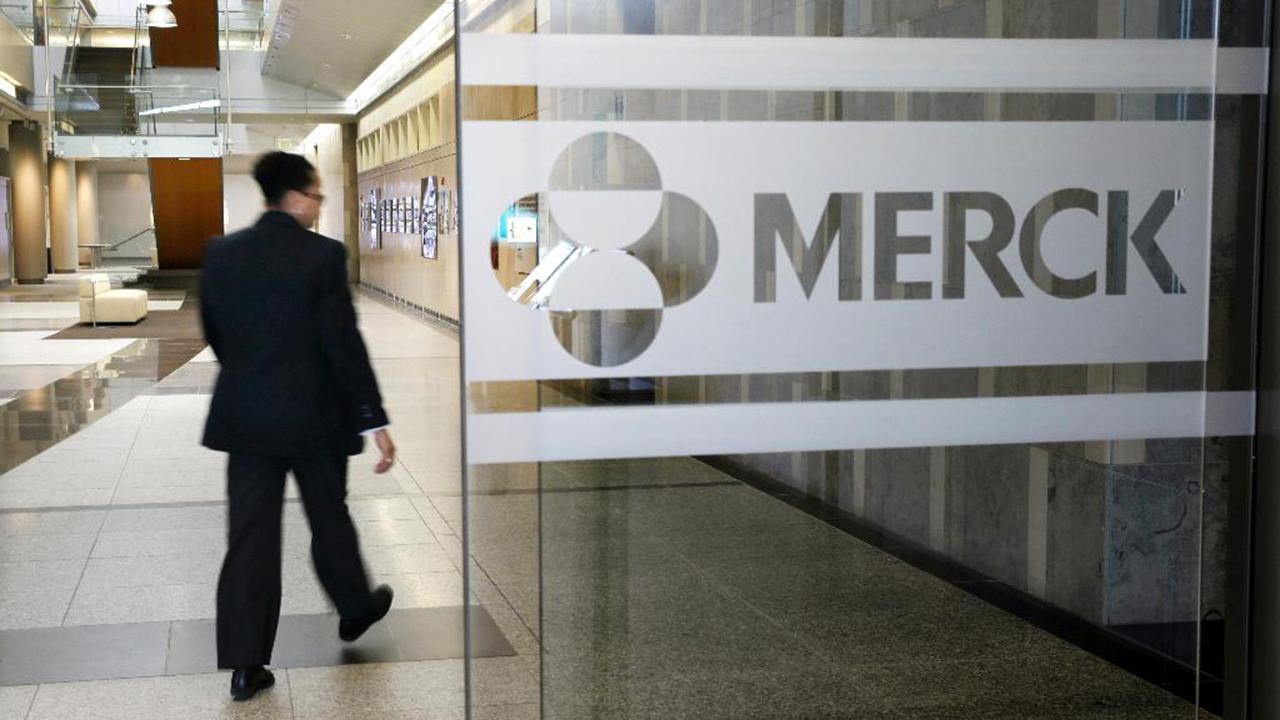Gyms across America promote risky tanning beds with health and wellness
Planet Fitness, Anytime Fitness and Gold's Gym have the most tanning beds, a new study suggests
Gyms that promote health and wellness continue to offer members access to potentially fatal tanning beds.
Fitness chains across America are offering tanning beds as an added amenity for some memberships despite the reported risk for malignant melanoma, a serious form of skin cancer, according to a study published in the Journal of the American Medical Association in December.
Researchers at the University of Connecticut examined the number of gyms that have tanning beds from three popular big-box fitness chains -- Planet Fitness, Gold’s Gym and Anytime Fitness -- in 33 states and Washington, D.C. They extracted data on locations around the country from websites between June 2018 and February 2019. Each gym was asked multiple times whether they offered tanning and if so, how many tanning beds were available for use.

Seventy-eight percent of gyms across the country have tanning beds, according to a study published in the Journal of the American Medical Association. (Planet Fitness)
They found that 78 percent of gyms, or 1,347 out of the 1,727 included in the research, had tanning beds. Ninety-nine percent of Planet Fitness gyms in the study had tanning beds, 65 percent of Anytime Fitness gyms and 41 percent of Gold’s Gyms had tanning beds.
A total of 4,660 tanning beds were found in 1,347 gyms. Planet Fitness provided the most with 3,736 tanning beds, and it had a mean of five tanning beds per gym. The Midwest, at 87 percent, had the highest number of gyms with tanning beds, according to the study.
Planet Fitness, Anytime Fitness and Gold’s Gym did not immediately respond to requests for comment.
“Gyms are giving tanning beds a health halo. Everyone’s going for their New Year’s resolution to get healthy and it sends a confusing message,” Dr. Sherry Pagoto, a lead author on the study, told FOX Business.
“Gyms are giving tanning beds a health halo. Everyone’s going for their New Year’s resolution to get healthy and it sends a confusing message."
Tanning indoors increases a person’s risk of developing life-threatening melanoma by 75 percent before age 35, according to the Skin Cancer Foundation. And exposure to ultraviolet radiation from tanning beds causes genetic damage to cells and the outmost layer of skin and the damage can start from tanning just once.
And critics are saying it's contradictory to promote health and wellness while perpetuating the use of a cancer-causing tanning bed.
Accessibly priced gym memberships that include tanning as an amenity make it easy for consumers to use them before or after a workout.
Planet Fitness promotes its PF Black Card membership for $22.99 a month, which includes access to all of the gym's clubs across the country and includes the use of its massage chairs, hydro-massage beds and tanning beds. An All-Access membership at Gold's Gym, which includes tanning in addition to pools, hot tubs and steam rooms, costs $149.99 to join and an additional $29.99 a month. Anytime Fitness charges $36.50 on average for its monthly membership.
The number of people using indoor tanning facilities declined overall from 15.6 percent to 5.6 percent between 2009 to 2017, according to a separate study published in the Journal of Community Health. The percentage of women who tanned decreased from 8.6 percent to 5.2 percent during the same time period and the number of men tanning decreased from 2.2 percent to 1.6 percent, according to the study. And the risk is especially severe for those who start tanning at a young age. In 2017, 5.6 percent, or an estimated 900,000 high school-aged students in the U.S. used an indoor tanning device, a 64 percent reduction from the estimated 2.5 million in 2009, according to the Journal of Community Health study.
The 10 percent tanning tax implemented in 2010, and state laws restricting minors from using tanning beds, could be a reason for the decline in tanning. But gyms that have tanning as part of their memberships are not subject to the indoor tanning tax.
"Future tanning legislation should address tanning beds in diversified business environments," Pagoto wrote in the study.
One in five Americans will develop skin cancer by the age of 70, and tanning can increase the risk of basal cell carcinoma and squamous cell carcinoma, in addition to aging skin and wrinkles. And dermatologists are slamming fitness chains that promote tanning beds in tandem with exercise.
“I find it appalling that gyms have tanning booths and promote it next to exercise as something healthy or good for any individual,” Dr. Michele Green, a dermatologist at Lenox Hill Hospital in New York City, told FOX Business.
“Most people who frequent gyms are health conscious and yet they have cancer-causing agent machines of tanning booths to make money. They should outlaw these tanning machines and there should be more government regulation. A tan means skin damage. Period. Wrinkles and skin damage and ultimately skin cancer. This is by no means what a gym should have in their facility.”
"A tan means skin damage. Period. Wrinkles and skin damage and ultimately skin cancer."
| Ticker | Security | Last | Change | Change % |
|---|---|---|---|---|
| PLNT | PLANET FITNESS INC. | 64.95 | -0.35 | -0.54% |
Some tanning salons have been fined in recent years for giving false medical advice to customers. Beach Bum Tanning salons, which once advertised on social media that its fake tanning is a good source of vitamin D and that skin cancer is not linked to tanning, was ordered by the New York Attorney General's office to stop in 2016, the New York Daily News reported. The company also agreed to stop marketing to teens with promotions like "Prom Specials" and discounts.
Dr. Quenby Erickson, a Chicago-based board-certified dermatologist and spokesperson for the Skin Cancer Foundation, says tanning is one of the No. 1 causes of skin cancer in her patients, particularly among women.
"In the last year I diagnosed two people with melanoma and they were both under the age of 30. Both went tanning," she said.
MAKEUP SALES APPEAR WASHED OUT AS WOMEN GO AU NATUREL
Erickson suggests safer alternatives to fake tanning, like getting a spray tan or applying self-tanner. And the market for both products seems to be growing. The global self-tanning products market was valued at $1.47 billion in 2018 and is slated to grow by 5.9 percent between 2019 and 2025, according to data from Grand View Research. The market growth comes amid rising concerns over health risks and skin cancers associated with tanning and sun exposure as companies cater to a growing demand for natural ingredients in products, according to the research.
